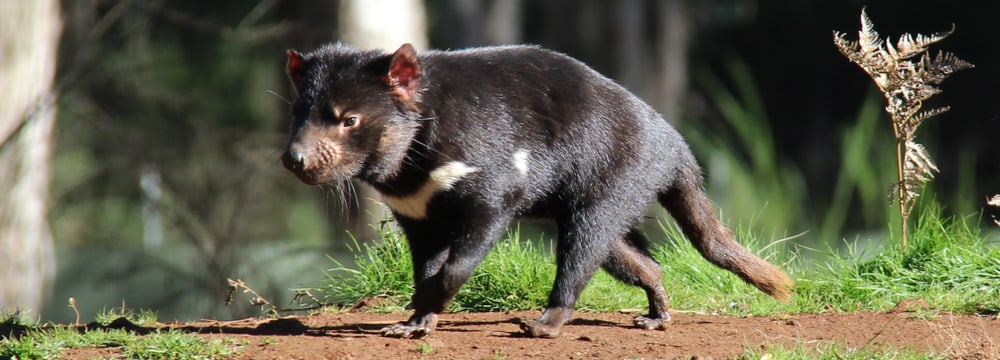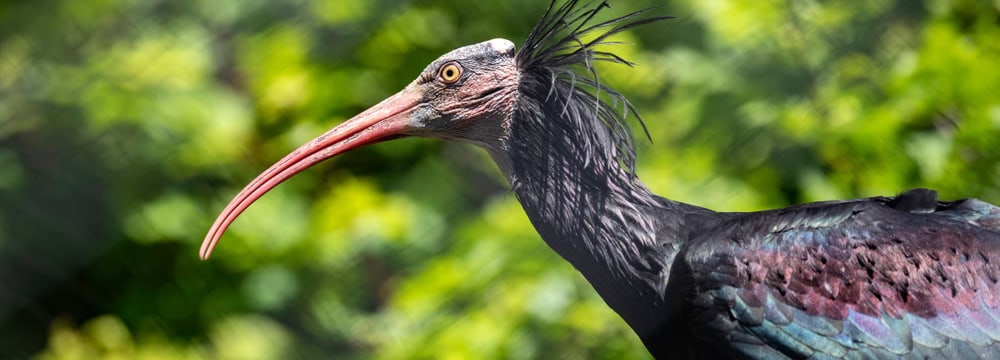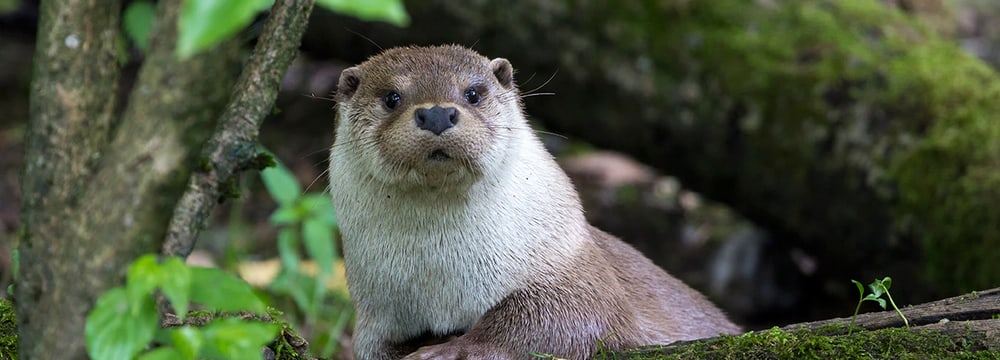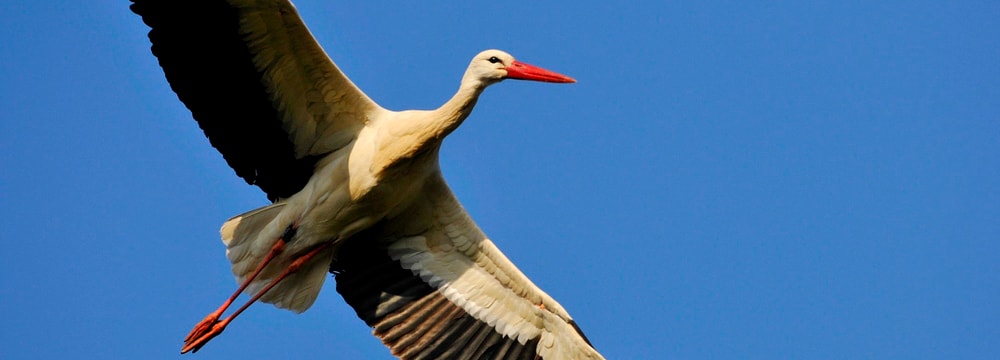Other projects
Various other nature conservation projects in which Zurich Zoo is involved or has been involved in the past.
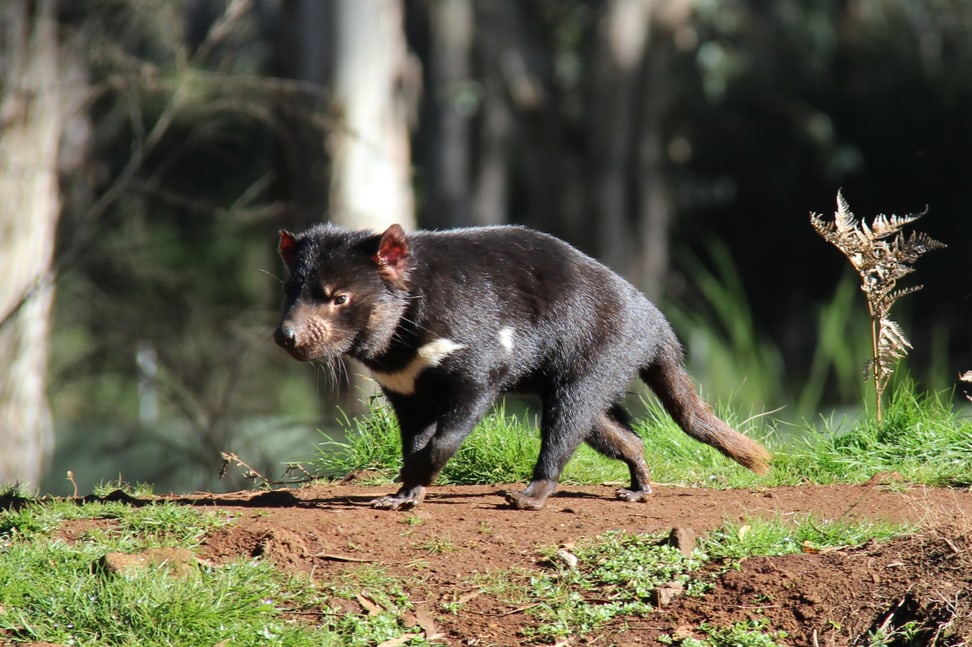
On the Australian mainland, the Tasmanian devil now only lives in breeding centres and zoos. Photo: Australian Reptile Park
- Project since: 2017
- Direct contributions: CHF 240'000.–
Our Commitment
Zoo Zurich is committed to the protection of the Tasmanian devil. Nowadays, the animal lives only in breeding centres and zoos on the Australian mainland. Zoo Zurich supports the Tasmanian devil breeding programme at its Australian conservation partner Australian Reptile Park.
The Tasmanian devil is a representative of the dasyuridae family. The animal lives alone in abandoned ground ditches or caves, and forages for food at night. They hunt but mostly they prefer to feed on carrion. They devour the whole of the animal, including its fur. Their diet includes small mammals, birds, reptiles and amphibians. Their weight reaching eight kilos, the Tasmanian devil is the largest carnivorous marsupial in Australia.
Within the framework of the project, spotted marmosets have already been released into the wild. Video: Zoo Zürich
Every year Zoo Zürich makes a substantial financial contribution to the conservation of the Tasmanian devil. In addition to the Tasmanian devil, five more endangered marsupial species are bred at the Australian Ark breeding centre: Brown Bandicoot, Eastern quoll, Eastern bettong, Long-nosed Potoroo and Parma wallaby. The aim of the breeding effort is to re-introduce the species into the wild in the long-term.
Challenges
Tasmanian devils are only found in Tasmania nowadays. In mainland Australia, they are extinct. The animal has been protected since 1941.
In 1996, a new type of cancer spreading among wild Tasmanian devils was identified. It affects the animal’s face. The tumours grow and prevent the animals from feeding normally. In later stages of the disease, after about a year, the animals starve to death. The cancer is spreading rapidly. In some areas of Tasmania, the wild population has completely collapsed. It is assumed that cancer cells are transmitted within the population through infected saliva. It usually happens during fights over food or females, when the animals bite each other.
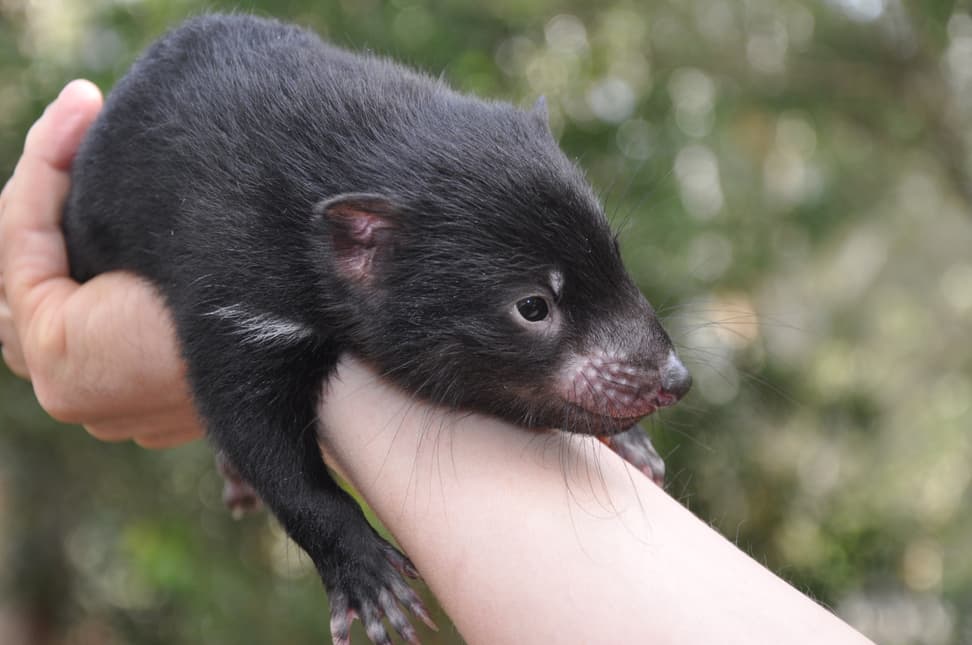
90% of the wild Tasmanian devils have disappeared. The breeding programme is their last chance. Photo: Australian Reptile Park
Breeding station for Tasmanian devils
The Australian Ark is a 500-hectare breeding station, located 1,400 metres above sea level in the Barrington Tops Mountains. In this area, the Tasmanian devil has been extinct for 3,000 years. The climate and the terrain are perfect. This station has been operating since 2011, and the breeding programme has so far been a success. In addition to two breeding stations in Tasmania, several zoos in mainland Australia are also taking part in the programme.
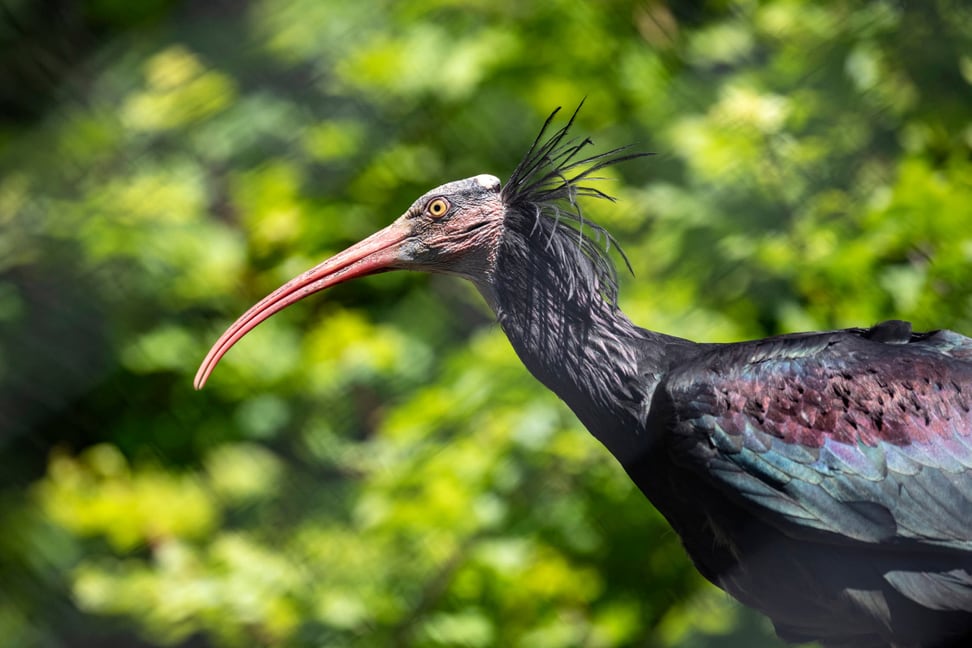
A northern bald ibis at Zoo Zurich. Photo: Zoo Zürich, Enzo Franchini
Our Commitment
The northern bald ibis has disappeared from Europe since the 17th century, wiped out by humans. For some time now, however, this peculiar bird has been breeding again in parts of its original range. It can also be found again in Switzerland. There are currently two reintroduction projects for the forest bustard in Europe. Zurich Zoo is participating in both projects by donating birds.
The «Waldrappteam» project aims to establish a new population of Waldrappen in Central Europe. From 2004 to 2018, the project was able to reintroduce 289 young birds from various zoos.
The second reintroduction project is based in Andalusia. There, they are trying to establish a non-migratory population, as the conditions in southern Spain allow the birds to remain year-round.
The northern bald ibis at Zoo Zurich have offspring . Video: Zoo Zürich, Nicole Schnyder
Conservation in practice
As part of the «Waldrappteam» project, the young birds learn the route to northern Italy to their winter quarters with the help of microlight aircraft flying ahead. Normally, they would learn this from their parents on the first flight south. Interested parties can follow the flight routes of the reintroduced birds in the live tracking app «Animal Tracker».
Zurich Zoo has also already provided young birds for the second reintroduction project in Andalusia. These will become part of a non-migratory population. Zurich Zoo is thus doing its part to reintroduce the iconic bird. Thanks to the reintroduction projects, forest bustards are also being seen more and more frequently again in Switzerland after an absence of 400 years.
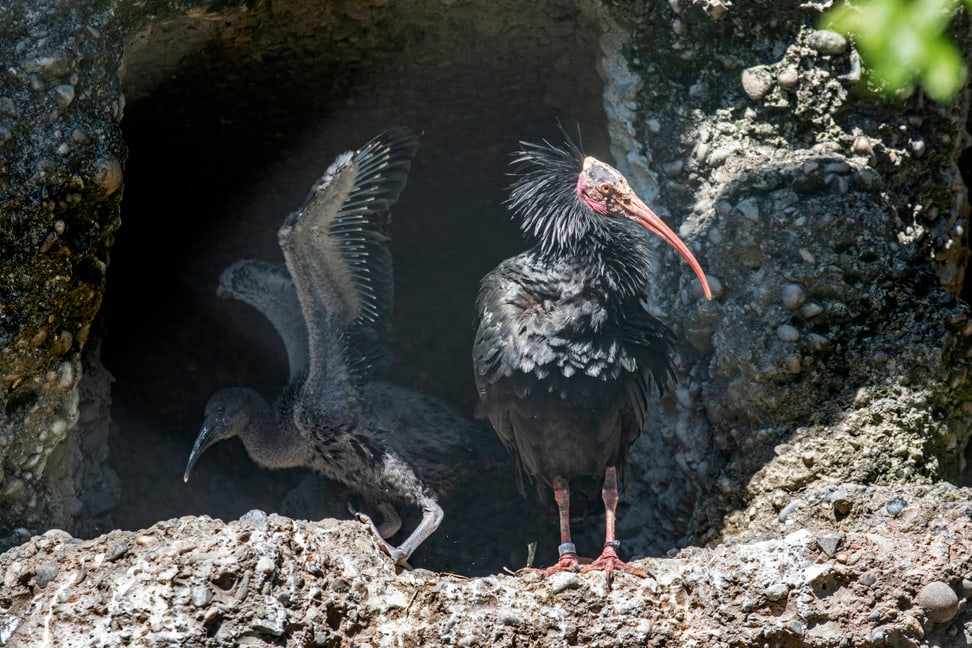
A northern bald ibis with its offspring at Zoo Zurich. Photo: Zoo Zürich, Enzo Franchini
Challenges
As the bald ibis is a migratory bird in Central Europe, one of the big challenges is to teach the inexperienced young birds the migration routes. Normally, they would learn these from their parents. Here, humans must now provide assistance and show the young birds the way by means of an aeroplane. However, the route involves many dangers and the mortality rate of the young birds is high.
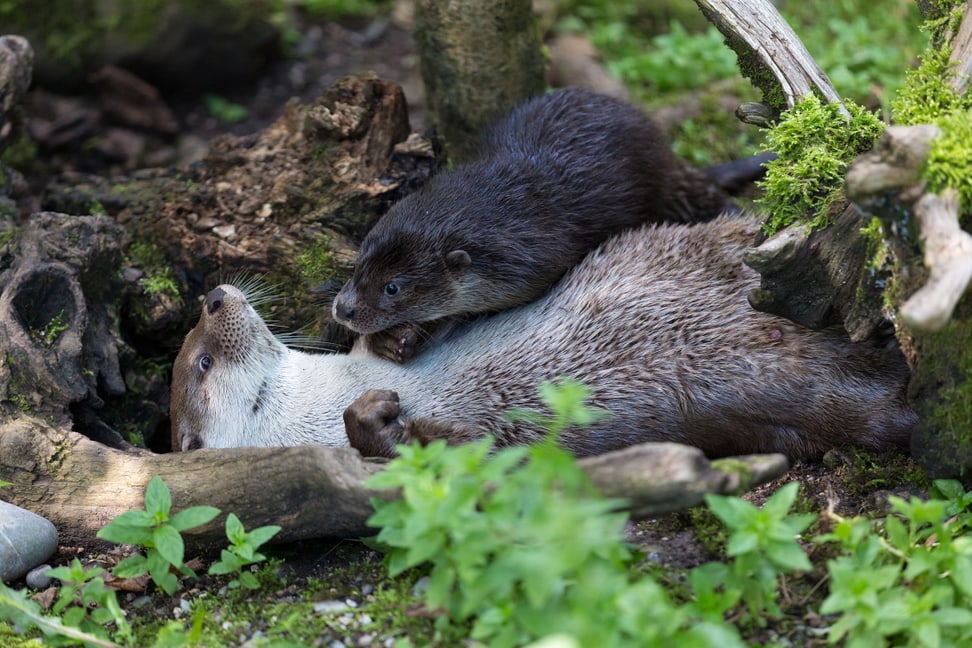
European otters at Zoo Zurich. Photo: Zoo Zürich, Enzo Franchini
Our commitment
Zoo Zurich, together with the Pro Lutra Foundation, is committed to the natural return of the otter in Switzerland. In this way, the public is continuously informed about sightings and the situation of the otter in Switzerland, so that it is not forgotten by the population and its natural return is well received.
In order to document the return of the otter and the relationship between the animals, Zoo Zurich provides the Pro Lutra Foundation with scientific material such as photo traps and video cameras and participates in DNA investigations. In order to successfully advance this project, the Pro Lutra Foundation is working closely with authorities and interested institutions. Dr. Hans Schmid, who is the head of the Pro Lutra Foundation Board, is in charge of the project.
At Zoo Zurich, otters are successfully bred within the framework of the European Conservation Breeding Programme and are regularly released to partners of the breeding programme.
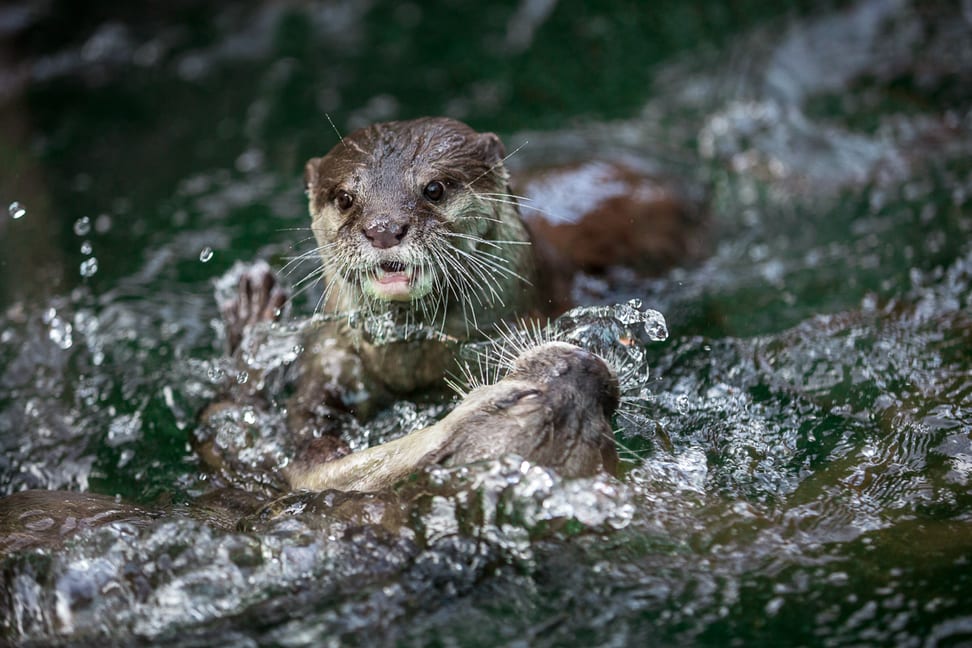
European otters in the water. Photo: Zoo Zürich, Enzo Franchini
Conservation in practice
After the Pro Lutra Foundation realised that the otter population in Styria (A) and Savoie (F) was spreading rapidly towards Switzerland, the Foundation set up systematic monitoring of the expected natural immigration in 2007. This monitoring is very complex, as the animals live solitary lives and their territory extends over a water system of 10 to 40 kilometres in length. In addition, the animals live in habitats with a high degree of cover.
Through the Lutra alpina research project, the Pro Lutra Foundation is investigating whether and how the habitat conditions for the otter have changed in our country. It also documents all confirmed evidence of otters in Switzerland and in neighbouring countries. On the basis of the knowledge thus gained, it is being examined how and where measures can be taken to enable the otter to return.
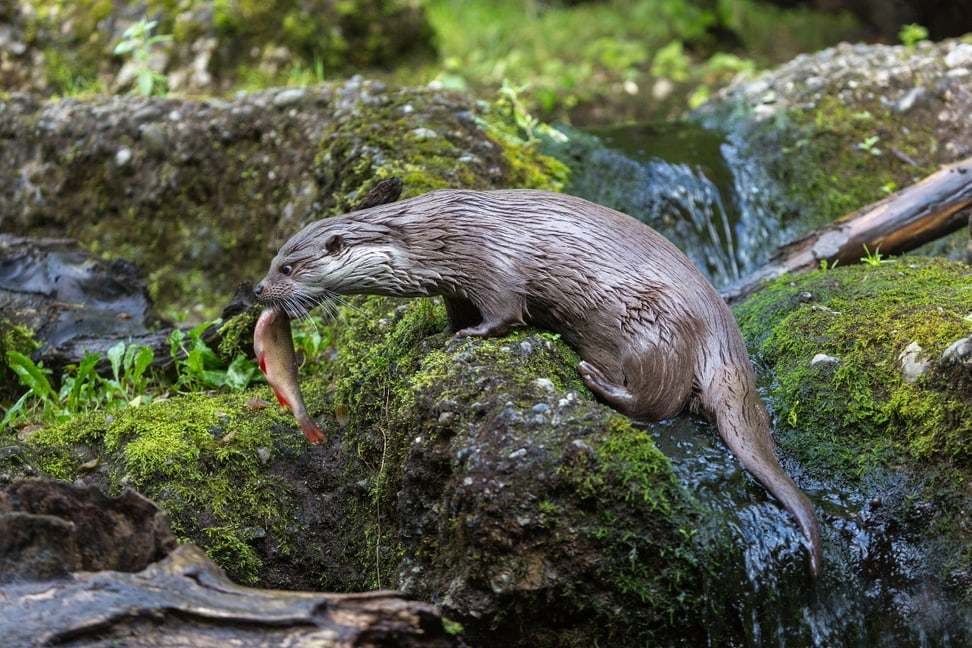
Otters are excellent fish hunters. Photo: Zoo Zürich, Enzo Franchini
Challenges
The European otter is one of thirteen otter species that were once widespread throughout Europe. From the second half of the 20th century, the otter was considered extinct in Switzerland. Despite extensive research, the causes of extinction have still not been clearly explained scientifically. Discussions have focused on targeted extinction hunting, toxic substances in the waters and a decline in fish stocks. Today, there is increasing evidence that the otter is returning naturally to Switzerland. The habitat of these animals is the dense riparian vegetation along rivers and streams, where they feed on fish, small mammals and birds. In order to positively influence the return of the otter, their habitats, such as floodplain forests, riverbanks and lakeshores, must be ecologically enhanced.
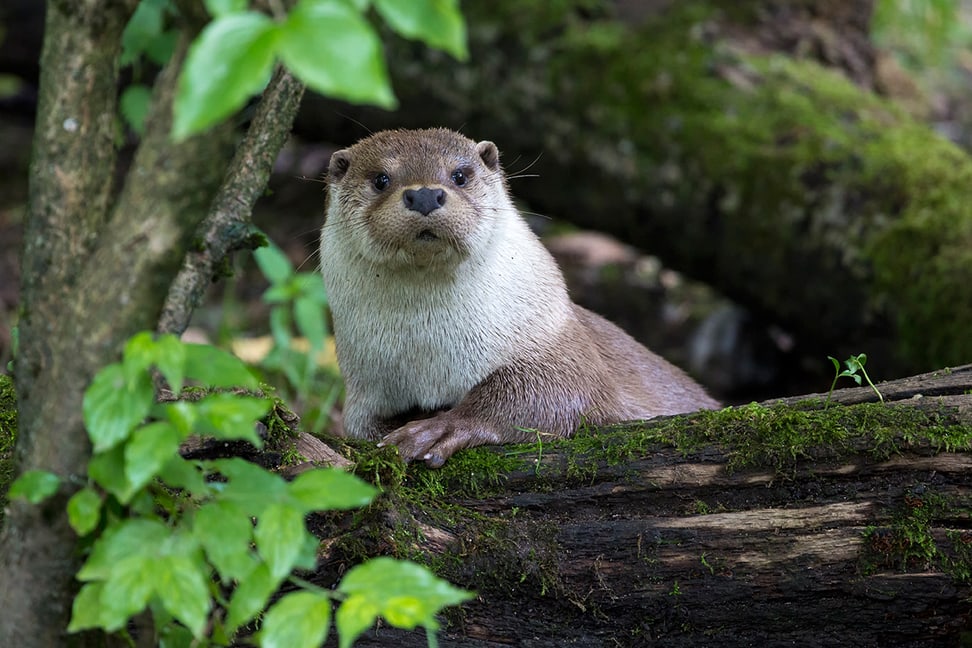
European otters have extremly dense fur but almost no fat. Photo: Zoo Zürich, Enzo Franchini
Return to Switzerland
Today, otters live again in rivers of Styria. However, this habitat is characterised by intensive cultural landscapes with multiple uses by humans. Typical examples are diverse industries and all forms of water use up to hydropower plants. Nevertheless, the otter has managed to establish itself.
These observations from Austria are particularly important for Switzerland, as the natural return of these areas over the past decade indicates that otters can live in intensively used subalpine and alpine valleys. How otters cope in such habitats, what demands they have on their habitat and refuges, and how they overcome the unavoidable barriers is largely unclear. The Lutra alpina research project aims to shed light on this. The results on how otters live and survive form the most important basis for the return of otters to Switzerland.
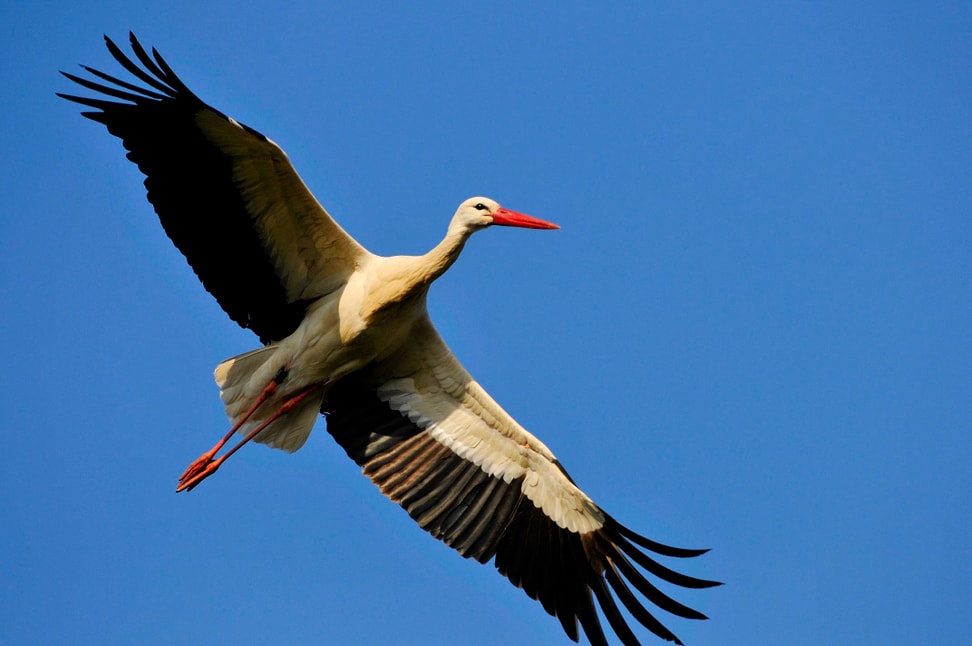
A white stork flying over Zoo Zurich. Photo: Zoo Zürich, Samuel Furrer
OUr commitment
Zoo Zurich supports «SOS Storch – Storchenzug im Wandel», a project that provides details on the migratory behaviour of storks. Several juvenile storks were fitted with a GPS data logger at the zoo so that information could be collected about their individual migration routes. Their movements have since been available to track with metre-by-metre precision on the website.
In addition, leg rings are attached to all fledgling storks at the zoo and breeding records are kept. The data obtained are forwarded to «Vogelwarte Sempach». We are continually setting up new nests at the zoo as well.
Ringing of the white storks at Zoo Zurich 2022. Video: Zoo Zürich
Conservation in practice
The establishment by Max Bloesch of Altreu Stork Colony in 1948, followed by resettlements, allowed storks to re-established themselves from 1970. Over the past 20 years, the number of breeding pairs has doubled in Switzerland and is now more than 350. Thanks to the creation of extensive meadows, the preservation of wetland areas such as reed lands and the regeneration of tributaries, it is hoped that the number of breeding pairs will increase in the coming years.
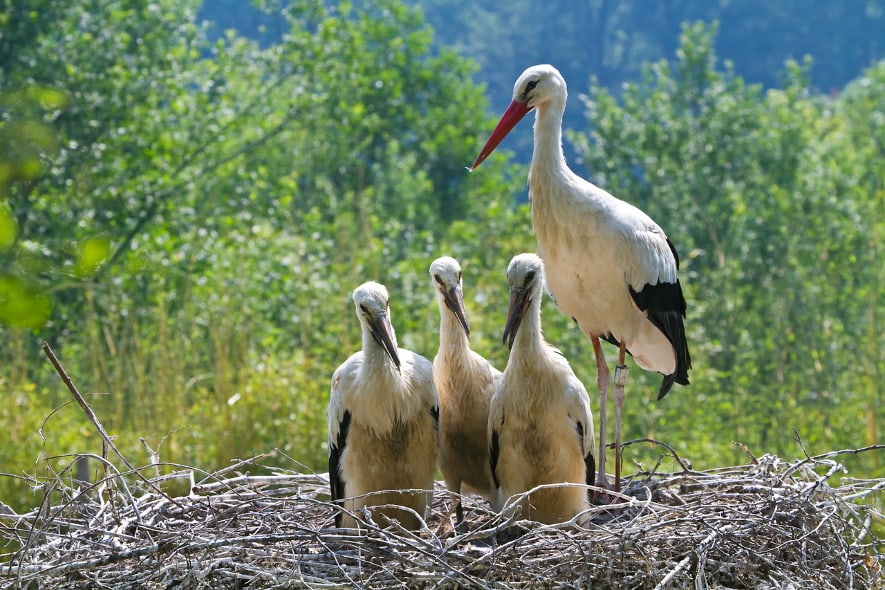
A white stork with its offspring on an eyrie at Zoo Zurich. Foto: Zoo Zürich, Enzo Franchini
Challenges
Storks are not native to the major forested areas of Europe. They were a bird of the plains in Africa and Asia, but migrated to Europe when open areas emerged during the Roman period and the Middle Ages, due to forest clearance. The species spread quickly and was soon found in Switzerland. Advancing industrialisation and related loss of natural habitat and food sources, as well as new dangers such as electricity cables, traffic, hunting and environmental pollutants, caused a rapid decline in the stork population. By about 1900, there were only about 140 nests with regular breeding pairs of birds remaining in Swiss midland regions. In 1950, none of the nests contained juveniles.
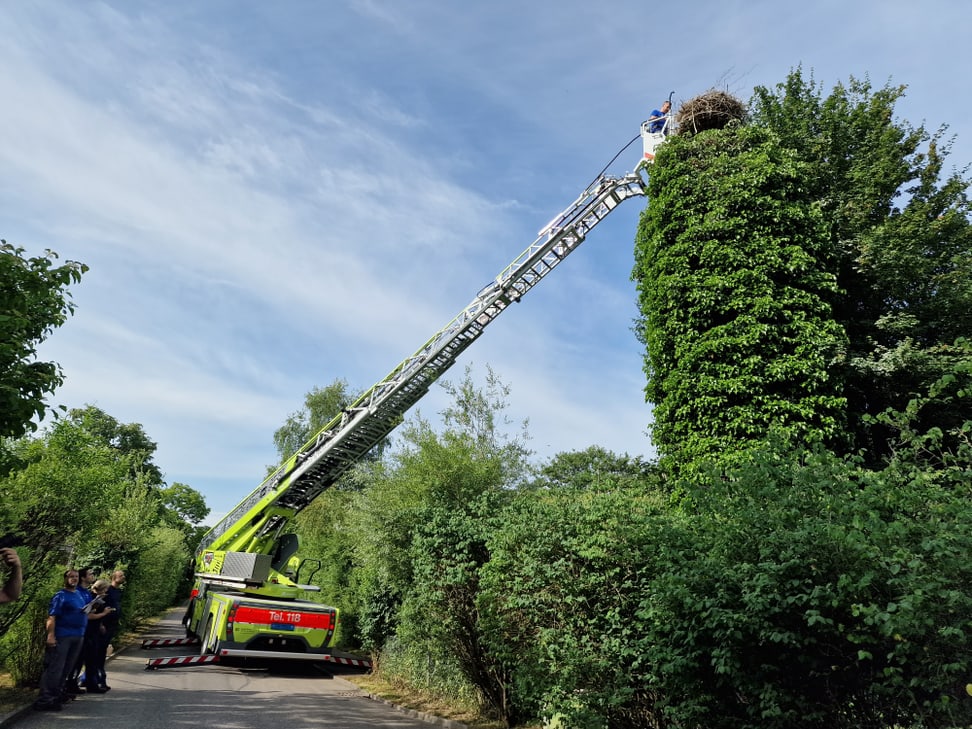
To ring the young storks, the support of Schutz & Rettung with a turntable ladder is necessary every year. Photo: Zoo Zürich, Sandro Schönbächler
Promoting white storks at Zoo Zurich
Storks have lived at Zoo Zurich since 1957. Until the 1980s, the birds were kept in the enclosures for water birds, where they were not able to fly. Now they choose to live here of their own accord. At least 260 new storks have hatched here in the last 10 years, and 150 of these have left and migrated south. Some return when they are sexually mature, at the age of three or four, and choose our neighbourhood or the zoo itself as a breeding ground. They even occupy nests on the ground in close proximity to visitors. Despite this, the visitors’ interest does not disturb the breeding activity. Breeding has even been observed between storks that are free and those that cannot fly away. Every year, we hope that as many juvenile storks as possible will survive the difficult period of rearing and subsequent migration.
Zoo Zurich is pleased to provide a home base for various nature conservation organisations. We provide infrastructure to our partners free of charge as a way of making a further contribution to nature conservation.
Verein Freunde Masoalas
The head office of the Swiss Friends of Masoala Association raises funds to implement projects directed by Masoala National Park and the world-renowned Wildlife Conservation Society WCS to stop the destruction of Masoala Rainforest in Madagascar.
Verein Freunde der Galapagos Inseln Schweiz
The Swiss Association of Friends of the Galapagos Islands provides substantial support for the work of the Charles Darwin Research Station in Puerto Ayora, Ecuador, to protect the Galapagos tortoise and its unique habitat.
